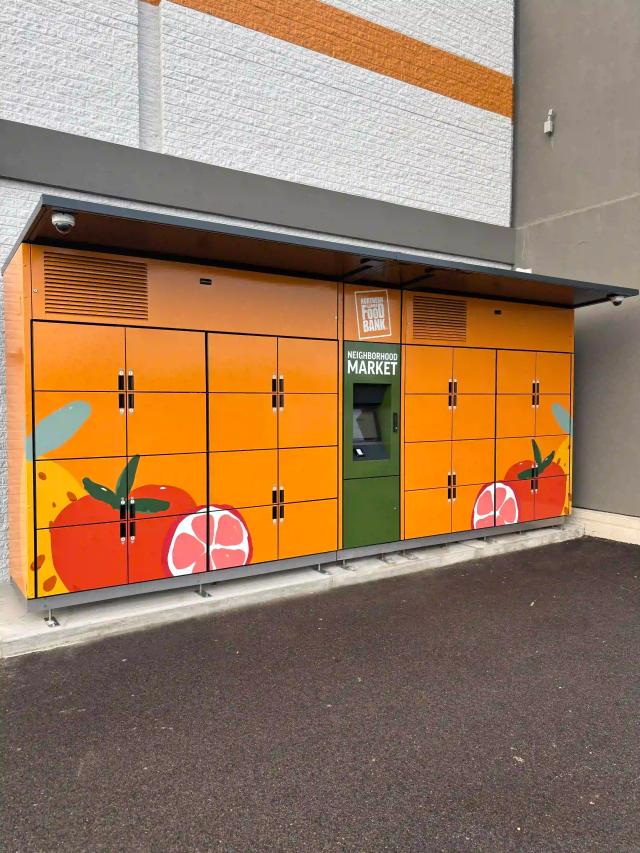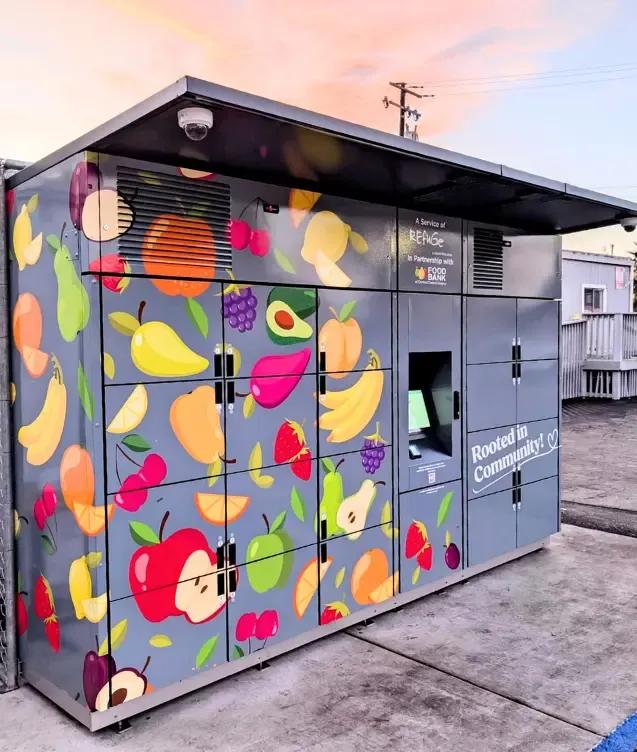Across the United States, food pantries and community organizations are finding creative ways to reach more people — without adding staff, space, or hours. Yet more than 47 million Americans experience food insecurity each year .
Smart food lockers are one of the most promising solutions: they let neighbors pick up food anytime, privately, and with temperature control that keeps groceries safe and fresh.
But as more organizations explore this model, one question keeps coming up: how do we fund it? This Insight brings together U.S. grant programs, foundation opportunities, and a free Smart Food Locker Grant Template to help your organization secure the support you need.
At a Glance
Top U.S. grants and funders that support food access innovation
How to tailor your proposal for maximum impact
Practical grant-writing ideas grounded in real examples
Free downloadable food locker grant template
Key resources for ongoing grant discovery
Why Food Access Needs Flexible Funding
While traditional pantries and mobile distributions remain essential, challenges like transportation, work schedules, and privacy continue to leave many people behind.
Smart food lockers help bridge that gap. They extend pickup hours, reduce wait times, and give clients a dignified, contactless way to collect their groceries. For food banks and partner agencies, lockers also make distribution more efficient — turning one pickup window into many.
As more communities modernize food access, funders are beginning to recognize locker systems as infrastructure that improves equity and efficiency — not just technology.
To understand how access models are evolving — from traditional pantry lines to flexible, tech-enabled systems — explore our Insight on Rethinking Food Access. It highlights how dignity, convenience, and data are reshaping how communities connect to food.
Where to Find Food Locker Funding
Federal programs are increasingly recognizing technology-enabled infrastructure as essential to modern food access. Smart food lockers can often qualify when positioned as part of a larger effort to improve distribution, equity, or community access.
Federal and National Grant Programs
USDA Urban Agriculture & Innovative Production (UAIP) Grants →
Supports projects that expand urban and community food access through innovation in production and distribution. Smart locker installations can complement urban gardens or farm-to-community initiatives, providing flexible, temperature-controlled access points for residents.NIFA Urban Agriculture & Innovative Production Grants →
Managed by USDA’s National Institute of Food and Agriculture (NIFA), this program funds planning and implementation projects focused on local food access, infrastructure, and innovation.Community Food Projects Competitive Grant Program (CFPCGP) →
Funds community-based efforts that strengthen local food systems and reduce food insecurity. Smart lockers may qualify under distribution infrastructure when part of a broader access or capacity-building plan.America’s Healthy Food Financing Initiative (HFFI) →
Supports projects that expand access to healthy, affordable food in underserved communities.Resilient Food Systems Infrastructure (RFSI) →
A USDA-funded, state-led initiative designed to strengthen regional food supply chains. Smart lockers can fit within the program’s focus on storage and distribution infrastructure.
Tip: These grants are competitive but attainable — especially when your locker program includes strong local data, clear partnerships, and measurable impact. If you’re a pantry or partner agency, connect with your supporting food bank before applying.
Private and Corporate Funders
Feeding America — Offers grants for innovation, disaster response, and community food access.
Walmart Foundation — Supports hunger relief, food recovery, and food bank infrastructure.
The Kroger Co. Foundation — Focused on ending hunger and food waste, often partnering with local food banks.
Albertsons Companies Foundation — Funds local hunger-relief programs through its Nourishing Neighbors initiative.
The Campbell Soup Foundation — Supports food security, child nutrition, and community wellness.
Conagra Brands Foundation — Invests in hunger-relief and nutrition education.
The Kresge Foundation — Awards grants that strengthen communities and equitable access to essentials.
Bank of America Charitable Foundation — Provides local and national grants through its Economic Mobility initiative.
Find Even More Opportunities
For a live list of open and upcoming opportunities, explore Instrumentl’s Food Grant Database — a powerful tool that compiles federal, state, and private funders in one place.
Creative Funding: Turning Lockers into Community Billboards
Smart food lockers don’t just expand access — they can also attract funding by serving as visible, community-centered infrastructure.
“This door is powered by [Local Business Name].”
This approach does three things at once:
Builds community ownership in your program.
Offers recognition opportunities for sponsors.
Helps offset installation and operating costs without relying entirely on grant funding.
From Idea to Impact: Writing a Grant That Tells Your Story
- NNEMAP Food Pantry expanded its reach by installing refrigerated smart lockers that allow neighbors to order online and pick up food 24/7. Download the NNEMAP case study →
- HealthLinc integrated Click n Collect lockers into its Food as Medicine program, helping patients access fresh produce. Download the HealthLinc case study →
You can also weave in client or neighbor feedback — authentic voices that bring your proposal to life:
These are the moments funders remember — and the ones that demonstrate the human return on investment of technology like smart food lockers.
What’s Next
Smart food lockers aren’t just storage, they’re infrastructure for equity, dignity, and innovation. With the right funding strategy and a clear proposal, your organization can expand access, reduce barriers, and create lasting community impact.





